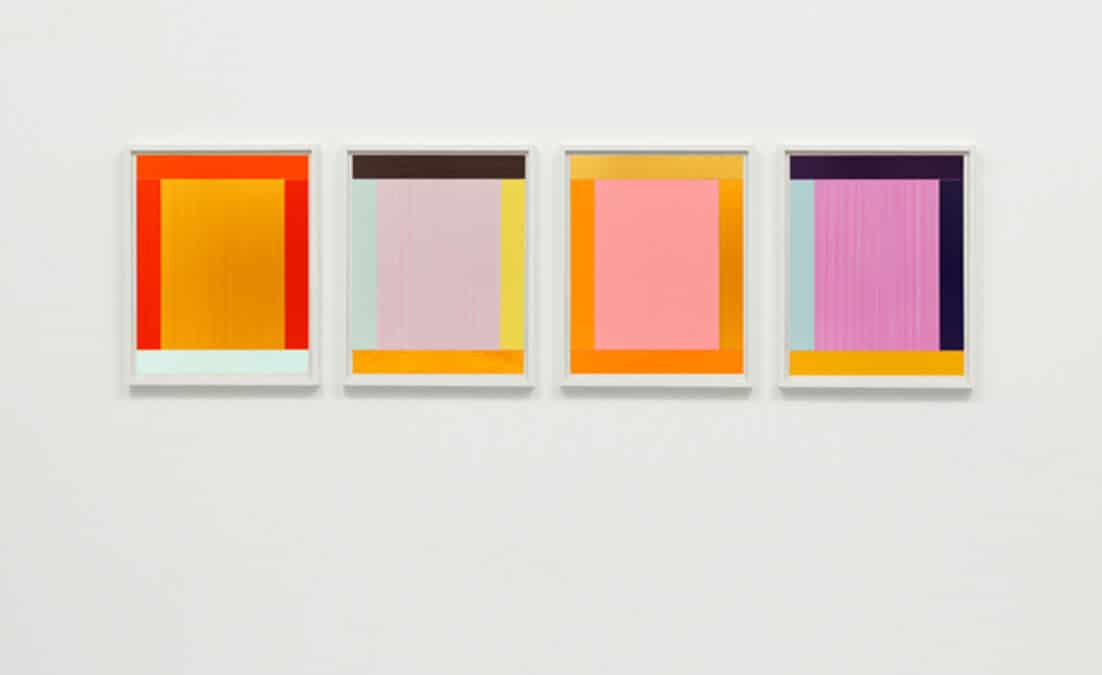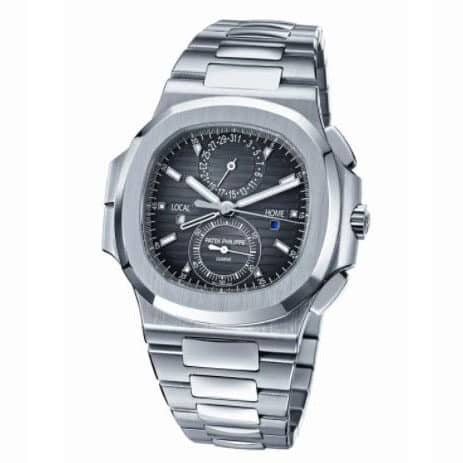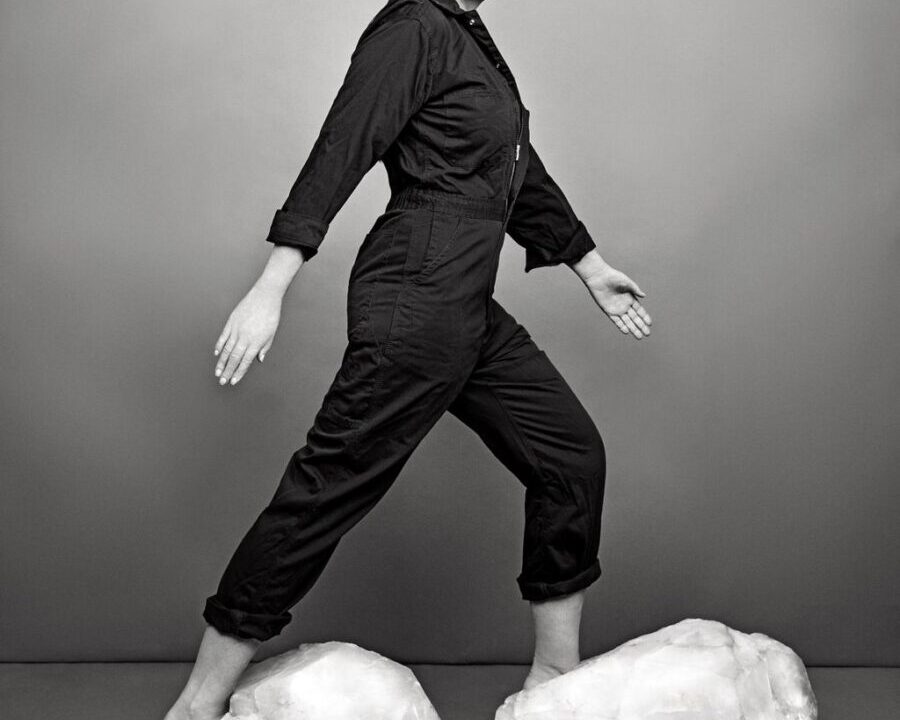The Life and Works of Imi Knoebel
Imi Knoebel (born Klaus Wolf Knoebel, 1940) is one of the leading German artists of the post-war period, and is known for his minimalist, abstract hybrids of paintings and sculpture. He studied at the Düsseldorf Art Academy and lives in Dusseldorf, Germany. He regularly uses the primary colors of red, yellow, and blue.
Knoebel initially focused on light projections, and pure white paintings. By 1974, he softened his reductionist position through the addition of color. Knoebel’s artworks depict an explosion of different tints that are uniquely disciplined and presented in a manner that is highly geometric. Each component is made up of an intense hue that inspires emotion in its viewers. The relationship between the different shapes and colors emphasizes both contrast and precision. Knoebel solidifies the emotions he arouses in the viewer through his deceptively simplified style. His unique and impeccable style has also been defined by the recurring “messerschnitt” or “knife cuts” that produce abstractly expressive shapes. Their seemingly haphazard coordination is but a projection of the artist’s deliberately relating different parts of the whole in an order that respects their values as defined by their shape and color.
“When I am asked about what I think when I look at a painting,” Knoebel has said, “I can only answer that I don’t think at all; I look at it and can only take in the beauty, and I don’t want to see it in relation to anything else. Only what I see, simply because it has its own validity.” Often producing work in groups or series, his minimal compositions rely on a pared down, strict vocabulary of forms combined with a subtle and commanding use of color, exposing the physical possibilities inherent in the most basic of materials, such as plywood, aluminum and fiberboard.
Knoebel first began making paintings in the 1960s with the strict and basic organizing principle of thick and thin vertical lines drawn at variable distances from each other. Between 1966-1973, he produced approximately 250,000 pencil line drawings, and exhibited them in six high and narrow steel cupboards, hermetically sealed and accessible only on demand. He further changed the medium of painting altogether by simply projecting lines, squares or crosses onto internal or external walls. This reductive approach to painting continued into a series of black and white abstract works that played with combinations of rectangular forms.
Since the mid-1970s Knoebel began to systematically experiment with color, the expansive painting series 24 Farben – für Blinky (1977) marking the beginning of this process. During the 1980s, he incorporated found objects into his installations and constructions in works such as Eigentum Himmelreich (Property kingdom of heaven, 1983) which consists of 18 separate objects and is dedicated to his friend and fellow artist Imi Giese (1942-1974).
Knoebel’s work exhibits a tension between materiality and immateriality evident in his white-on-white projections, plywood or ‘sandwich pictures’ and white paintings. The white Drachen (kite) series, for example, are quadrilateral-shaped works placed high up, as if floating, and barely visible on the gallery wall. In the plywood paintings he extends the form of a two-dimensional painting into three-dimensional space through a process of invisibility or concealing. Painted on one side and sandwiched together with their colored side facing inwards, the only trace of the color existing is through its drips or residue around the edges of the work. These sculptural paintings enact a pictorial denial, relying instead on the viewer’s projection or knowledge that the color exists, creating a sense of encounter through a literal internalization of painting.
Since the 1990s, Knoebel has used aluminum as a painting ground, cut-out and painted in single colors, such as in the series of primary colored paintings titled Ich Nicht (Not Me) 2006. In recent works (2014-2015), Knoebel has combined organic and geometric-shaped panels in combinations of two or three colors, occasionally adding in a phosphorescent effect that soaks, stores and emits the surrounding light. In these paintings, Knoebel explores formal contrasts such as hard-edged with soft, colored with neutral and matte with reflective to vivid effect. He also incorporates architectural motifs into recent compositions, such as window or door-shaped sections of wood, as well as sections of mirror that partially include the surrounding gallery architecture into their pictorial field. In other works, his painting is expanded to an architectural scale with large panels of aluminum joined together to form a makeshift corner-like space, inviting the viewer to enter its zone of pure, resonant color.
Major Exhibitions
Knoebel’s works are held worldwide in numerous public collections, including Dia: Beacon in Beacon, New York, The Museum of Modern Art in New York City, and the Albertina in Vienna. His solo exhibitions include the Museum Haus Konstrucktiv, Zurich, Switzerland (2018); Museum Haus Lange und Haus Esters, Krefeld, Germany (2015); Kunstsammlung Nordrhein-Westfalen, K21, Düsseldorf, Germany (2015); Kunstmuseum Wolfsburg, Germany (2014); Museum der bildenden Künste, Leipzig, Germany (2011); Gemeentemuseum, The Hague (2010); Neue Nationalgalerie, Berlin (2009); Deutsche Guggenheim, Berlin (2009); Dia: Beacon, New York (2008); Hamburger Kunsthalle, Germany (2004); Kestner Gesellschaft, Hannover, Germany (2002); Institut Valencià d’Art Modern, Valencia, Spain (1997); Kunstmuseum Luzern, Switzerland (1997); Haus der Kunst, Munich, Germany (1996); and Stedelijk Museum, Amsterdam (1996).
Awards
Perhaps Knoebel’s most notable achievement, and the most significant honor bestowed on him to date, is the major commission of nine large stained-glass windows for the royal cathedral of Notre Dame in Reims installed in 2011 (six) and 2015 (three). More than a century after being severely damaged by German bombing raids, Knoebel designed the new stained glass windows for the cathedral. He refused payment for his participation in the project. These majestic windows – abstract compositions with hundreds of pieces of glass in vivid shades of red, blue and yellow – can be seen as a conciliatory gesture since the building had been badly damaged by German bombing in August 1914.They were officially presented in 2015, during a ceremony attended by the Foreign Ministers Frank-Walter Steinmeier of Germany and Laurent Fabius of France.
Value at Auction
In 2016, Knoebel’s piece “Grace Kelly” (1989) was sold for a record £365,000 at Christie’s in London.
Add the Works of Imi Knoebel to a Private Collection
Astute collectors will keep an eye out for live and online auctions of work by this renowned German artist to add to their private collections.
Selling the Works of Imi Knoebel
Do you have works by Imi Knoebel that you are interested in selling, appraising or cosigning? Call Joshua Kodner today, and ensure you receive the true value of your property.




